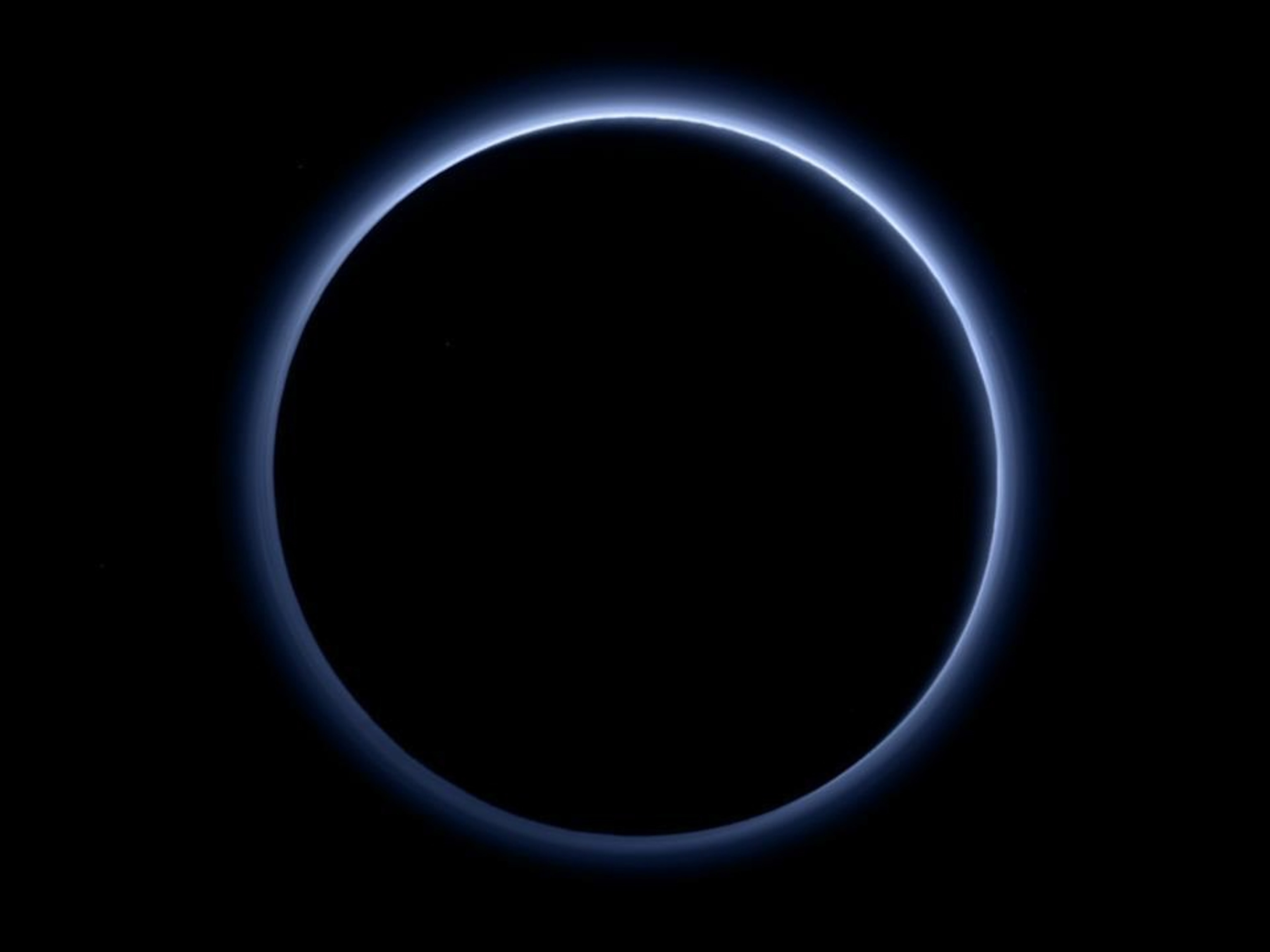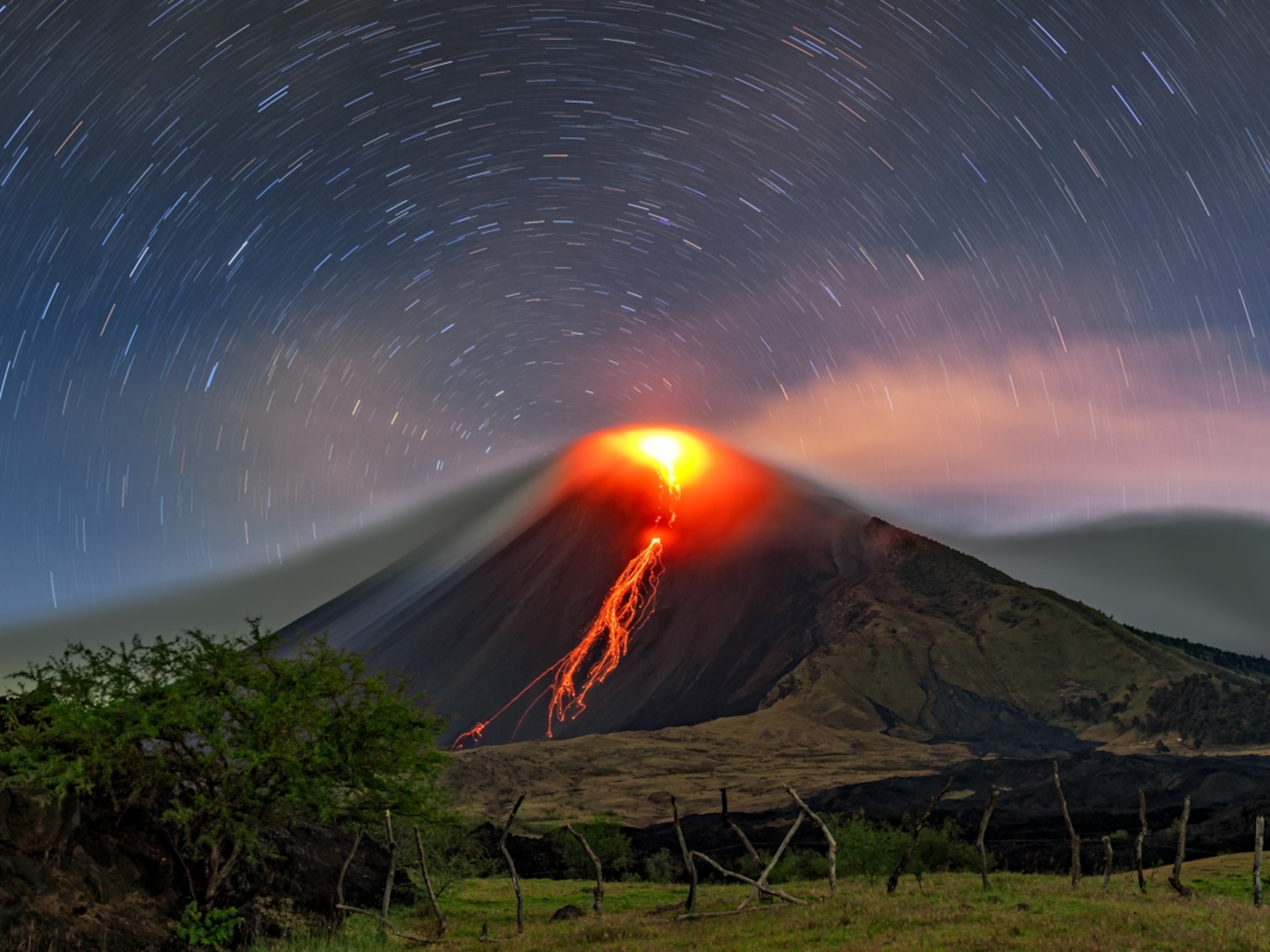
Pluto's "Twin" Has Frozen Atmosphere
Dwarf planet Eris could be coated in frost made from collapsed gases, study hints.
Despite being three times farther from the sun than Pluto, the dwarf planet Eris could almost be the demoted planet's twin—just with a truly icy atmosphere.
According to new observations, Eris is not only close to Pluto in size, it's also so highly reflective that it's one of the brightest objects in the solar system.
We can't see Eris with the naked eye due to its great distance. Right now, the tiny world is almost at its farthest point from the sun, roughly 9 billion miles (14.5 billion kilometers). By contrast, Pluto's farthest distance from the sun is just over 4.5 billion miles (7.3 billion kilometers).
Still, combined with other data, the dwarf planet's brightness suggests that Eris once had a Pluto-like atmosphere that's frozen solid, existing as a thin layer of frost on the surface, astronomers say.
(See "Pluto Has Toxic Carbon Monoxide in Its Atmosphere.")
Eris has what's called an eccentric orbit—rather than a perfect circle, its path around the sun is shaped more like a squashed egg.
In about 250 years, Eris will make its closest pass by the sun, coming within 3.4 billion miles (5.6 billion kilometers). The added heat will allow its frozen gases to sublimate—turn directly from a solid to a gas—making Eris even more Pluto-like.
Pluto's orbit is also a bit eccentric, though not as much as Eris's, said study leader Bruno Sicardy of the Paris Observatory in France.
"Pluto is now receding from the sun, and the expectation is that in 20 years or so, the atmosphere of Pluto will be cold enough to collapse, and then little by little, Pluto should turn into an Eris."
Tales of the Occultation
Astronomers gathered the new data on Eris by watching an occultation event, when the dwarf planet passed in front of a distant star, as seen by two telescopes in Chile.
By observing how the star's light dimmed as it was blocked by Eris, scientists could calculate the planet's radius as well as better measure its reflectivity.
The data show that Eris has a radius of about 722 miles (1,163 kilometers)—very close to Pluto's most recently estimated minimum radius of 715 miles (1,150 kilometers).
(See "Pluto Is the Biggest Dwarf Planet, After All?")
Previous direct imaging of Eris showed that its surface composition includes methane and probably nitrogen. Due to the body's brightness, astronomers think those chemicals exist as ice—leading to the idea of a frozen atmosphere.
Frozen Eris a Lucky Break?
If Eris really does have a seesaw atmosphere, astronomers are lucky to be seeing the dwarf planet in its icy phase: Even Pluto's thin atmosphere is enough to obstruct accurate occultation-based measurements of the dwarf planet's size.
"The starlight is defocussed to near invisibility by the atmosphere before it is cut off by Pluto's solid surface," said astronomer Leslie Young of the Southwest Research Institute in Colorado, who was not involved in the new Eris research.
"This means we can't use occultations alone to measure Pluto's radius," Young said.
(Related: "Pluto to Make a Star 'Wink Out' Twice This Week." [June 2011])
NASA's New Horizons spacecraft should settle the matter when it reaches Pluto and sends back closeup images in 2015.
For now, at least, occultation data hint that Eris and Pluto are very similar—but people shouldn't read too much into the notion that the dwarf planets are practically twins, study leader Sicardy said.
"It's just a coincidence."
The paper describing the Eris occultation appears in the October 27 edition of the journal Nature.





